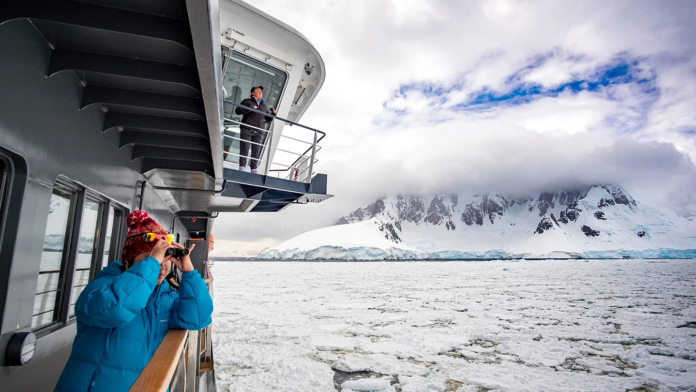Because Antarctica is in the Southern Hemisphere, the best time to visit will vary based on your travel plans and your personal preferences. For example, if you want to see penguins, the best time to travel will be during the breeding season, from mid-September to early November. However, suppose you are interested in going diving or visiting an underwater research station.
In that case, you’ll probably want to visit between May and September because that’s when ice shelves are at their thinnest due to warmer summer temperatures. Here’s a short guide on what the best times are to travel to Antarctica as well as when you should avoid going to maximize your experience and minimize your cost of travel. If you would like more information, please read on…
The best time to visit Antarctica depends on what you want to see
It’s a land of extremes, ranging from sub-zero temperatures to 24-hour daylight, and knowing what time of year to visit can help you make your itinerary as efficient as possible. Antarctica is divided into three main regions: East, West, and South; all three have different ecosystems and weather patterns. You should also consider how long you want to stay in each region – seven days are usually enough for any trip – and how long you can afford to stay without income. If possible, you should plan for two days in transit so that you don’t have to rush on arrival or spend too much time getting there! A lot depends on when your favourite season starts…
Our suggestion is to book well ahead of time (two years ahead) if you’re interested in visiting during summertime, between October and February. During these months, it’s light 24 hours a day and warmest. The most popular destinations are South Georgia Island (an easy ferry ride from Punta Arenas), Elephant Island (where Shackleton’s men were stranded), and Scott Base/New Zealand Station at McMurdo Sound near Ross Island, where New Zealand maintains an Antarctic research station.
If you’re looking for wildlife, your best bet is July through September, when whales migrate into sub-Antarctic waters. You can also see penguins, seals, and albatrosses year-round on sub-Antarctic islands such as South Georgia or Macquarie Island. Many tour operators offer cruises that combine wildlife viewing with landing on historic sites like Cape Adare or Port Lockroy on Wiencek Island – both of which were once used by explorers as bases for further exploration.
Do I Need a Visa to Visit Antarctica?
As of now, there are no specific visas needed to visit Antarctica. Most visitors to Antarctica travel on their own country’s passports. There are only a few countries that require their citizens to obtain visas before visiting Antarctica: Bolivia, Chile, Colombia, Ecuador, Peru, and Venezuela. So if you’re not from one of these seven countries, then you won’t need a visa to visit New Zealand or any other country that has flights landing in Antarctica.
Of course, it is recommended that you check with your local consulate for any updates. You can also check out your government’s foreign affairs department website for more information about travelling to Antarctica. It should be noted that even though there aren’t currently specific requirements for travelling to Antarctica, all visitors must have proof of onward transportation (i.e., plane tickets) when they arrive at an airport near an Antarctic destination point because most Antarctic tourism companies will not provide transportation between airports and research stations/hotels.
What is the weather like in Antarctica?
When traveling to Antarctica, it’s important to keep in mind that weather conditions will be much different than what you might be used to. Typically, most places on Earth see a marked change in seasons throughout the year, with summer and winter being quite the opposite of one another. However, there is no summer or winter in Antarctica: instead, there are just two seasons—Antarctic summer and Antarctic winter.
This gives you a somewhat greater range of possible travel times but doesn’t make things much easier! Unless you love dealing with unpredictable weather and cold temperatures (and many people do), try planning your trip between November and February. In these months, you should have plenty of daylight hours without too much snowfall.
How Long Does it Take to Get to Antarctica From South America?
There are no direct flights from South America to Antarctica. Visitors generally depart from Punta Arenas, Chile, on an international flight to Buenos Aires, Argentina; Santiago, Chile; or Montevideo, Uruguay. From there, they fly to Ushuaia on a domestic flight or an international flight (to New Zealand or Australia). Round-trip flights can take anywhere from 24 hours to 72 hours, depending on itinerary and airline.
Because of its location near the Antarctic Circle, midsummer is technically summer in Ushuaia—but daylight hours vary greatly, with only about two hours of light during winter. But travelers should note that weather conditions can create travel delays at any time of year. Therefore, it’s recommended that you do some research before deciding which month is best for your trip!
What Should I Pack for an Adventure in Antarctica (that doesn’t involve flying)?
Even though you will be on a ship for most of your trip, there are still items that you should bring along with you. If you have never been to Antarctica before, take some time to do a little research on what is available at each port and determine if any of these supplies would be beneficial. It’s best to over-pack when traveling to such a remote area than under-pack.
Once all luggage has been loaded onto your vessel, there will be no extra space for anything else. Being prepared for an adventure in Antarctica requires knowing how long a common excursion is and how long your vessel can stay at sea without needing additional fuel or supplies, as well as having emergency clothing just in case something happens along the way.
Conclusion
When is the best time to travel to Antarctica? That depends on your own goals and priorities. For many people, October and November are considered peak seasons for travelling to Antarctica. This would be ideal if you’re interested in seeing as much wildlife as possible. However, if you prefer warm weather and warmer water temperatures, then visiting in July and August might be more appealing. And of course, there’s nothing wrong with visiting during other months—it just depends on your interests!


